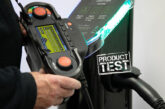
Pete Monfort, Director at Monty Electrics and Arena Training Centre, reviews the book many electricians have been longing for.
I often get asked which books I have read and people roll their eyes when I reel off a load of technical titles, but as an instructor at a successful electrical training centre I think it is important to stay abreast of technical requirements. It goes with the terrain.
When I’m not instructing, I’m ‘on the tools’ and although technical knowledge is essential, there is the added requirement to actually apply the technical requirements in the real world of wires, terminations and enclosures. While BS 7671 is a useful resource it isn’t exactly bedtime reading and it certainly offers little in the way of guidance on how to actually do the job practically.
I was therefore excited to receive a copy of the NAPIT On-site Solutions publication which promised (on page 4) ‘good and proper solutions to the everyday problems electricians encounter on-site.’
The first thing I noticed was the list of contributors and cooperating individuals which included those with a proven track record and experience in the industry. Household names (in electrical circles) such as Sparky Ninja, Ryan Dempsey and prominent e5 Group members, along with a host of other professionals, are all in there.
Content is key
The content was well laid out and I have to say that it is an attractive looking book with clear print and colour diagrams. Section 1 provides a useful breakdown of important legislation and would support anyone due to undertake a CPS assessment since it would remind them of the extensive legislation that they should be complying with in terms of health and safety.
It is refreshing to see the reminder about the use of lock-off kits being a part of an electrician’s PPE since I must be going blue in the face from telling sparks to lock off – I’m still surprised by how many fail to apply these principles. Even better is chapter 5, entirely dedicated to this important procedure.
Chapter 2 covers many of the required definitions in common use, while chapter 3 is a good read and covers a plethora of issues surrounding installation including types of supply, a breakdown of the key issues to consider when selecting consumer units such as protective devices, RCD types, selectivity, and newer topics such as AFDD and SPD selection, plus many other installation considerations that changed recently in the 18th Edition.
Having just led a C&G 2396 Level 4 course I’ve particularly enjoyed chapter 4 which gives some super examples of design calculations and also looks at circuit details for lighting, sockets and issues to do with wiring kitchens and outbuildings. It’s nice to see an explanation for the oft misunderstood issue of perceived shock for cabling outside. The section on heating controls will support those newer sparks who are perhaps less familiar with the complexities of wiring control centres, given that many homes now simply have a fused spur for combi boilers.
Chapter 6 covers inspection and testing. Identification of metal work as being extraneous (or not) was cleared up with a worked calculation and the myth that bonding conductors should be 0.05ohms or less was also addressed; of course, the resistance should be commensurate with the csa selected in accordance with BS 7671 and the length of conductor. The mention of an R1RN test made me smile – I often do this myself as it confirms the neutral return path.
The diagrams showing how to carry out tests are excellent and the problems that we all come across with insulation resistance testing are discussed in detail with examples for how to overcome such issues as USB sockets and SPDs. The chapter finishes with some excellent advice on periodic inspection frequencies.
Chapters 7-10 cover documentation, PV generation, electric vehicle charging and smart homes. Again these explained, with the help of useful diagrams, some of the issues installers face and offers workable solutions.
In conclusion
Overall I think this book is an excellent read. It is well suited to electricians who are ‘on the tools’ and the numerous examples with clear illustrations will improve the readers’ understanding of ‘how to do it’ whilst securely linking this to the concept of ‘why we do it’. Highly recommended.
Order your copy of NAPIT’s On-Site Solutions here.









